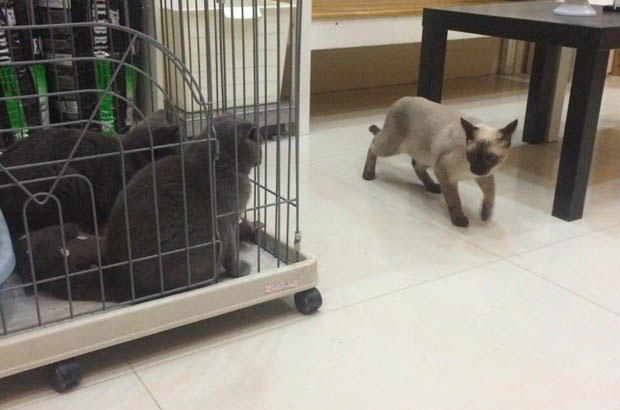There’s something undeniably captivating about a Ragdoll cat—a breed that transcends the ordinary and ventures into the realm of the extraordinary. These feline giants, with their plush coats, piercing blue eyes, and commanding presence, are more than pets; they’re living symbols of grandeur. As a proud owner of a “larger-than-life” Ragdoll named Apollo, I’ve discovered that embracing his size isn’t just about having a cat—it’s about adopting a lifestyle of awe, ambition, and unapologetic pride.
The Majesty of the Magnificent Ragdoll
Ragdolls are often dubbed “the gentle giants of the cat world,” and Apollo embodies this title perfectly. At three years old, he weighs a robust 20 pounds, his muscular frame hidden beneath a cascade of silken, seal-point fur. When he stretches, his body spans the entire length of my queen-sized bed, and his paws, disproportionately large and tufted, resemble tiny lion’s paws. Visitors often gasp upon meeting him: “Is that a cat or a small panther?” they ask, eyes wide. I beam with pride, half-jokingly comparing the experience to owning a miniature tiger—minus the need for a zoo enclosure.

But Apollo’s size is more than a party trick. It’s a testament to the breed’s unique genetics. Ragdolls are one of the largest domestic cat breeds, with males often reaching 15–20 pounds and females 10–15 pounds. Their slow maturation (taking up to four years to fully develop) only adds to their mythical aura. Every day with Apollo feels like living with a character from a fairytale—a regal beast with a heart of gold.
Conquering Small Spaces: The Art of Living Large
Critics may argue that such a massive cat belongs in a mansion, not a cozy apartment. To them, I say: challenge accepted. My 600-square-foot studio has become Apollo’s kingdom, thanks to clever design and a refusal to let space define us:
Vertical Real Estate: A floor-to-ceiling cat tree, equipped with perches, tunnels, and a faux fur hammock, gives Apollo room to climb and survey his domain.
Luxury Lounging: A heated bed atop the fridge (his “throne”) offers a panoramic view of the kitchen, while a sprawling memory foam pad in the living room accommodates his full-body stretches.
Interactive Play: Wand toys and laser pointers turn tiny corners into arenas for epic chase scenes, proving that agility isn’t limited by size.
Apollo’s presence has even inspired me to rethink my own space limitations. His need for room to thrive became a metaphor for my own ambitions: if he can flourish in a small apartment, why can’t I aim for bigger goals? As I hustle to upgrade to a larger home, I’m driven by a dual purpose: giving my giant companion the space he deserves and proving that size—whether in cats or dreams—is no barrier to grandeur.
The Psychological Power of Giant Cat Ownership
Owning a “beast” like Apollo comes with unexpected perks:
Confidence Boost: There’s a primal thrill in being the human companion of a creature that commands attention. When Apollo walks (read: lumbers) beside me on his leash, strangers step aside, half in awe, half in jest. “He could take down a deer,” someone once joked. I laughed, but secretly, I believed it.
Ambition Catalyst: His size serves as a daily reminder that greatness requires space to grow. Every time I scroll past luxury condos for sale, I think: Apollo deserves a penthouse with a view. This feline-fueled ambition has translated into career drive—I’ve taken on extra projects, negotiated raises, and even started a side hustle, all in the name of “cat enrichment.”
Joy in the Absurd: Let’s be honest: there’s something hilarious about a 20-pound cat squeezing into a tiny cardboard box or trying to curl up in my lap like a lapdog. His ability to defy expectations (and physics) keeps life playful, reminding me that seriousness is overrated.
Debunking Myths: Size, Maintenance, and the “Ideal” Home
Detractors often raise concerns about Ragdolls’ care requirements:
Grooming Overload: Yes, Apollo’s long fur requires daily brushing to prevent mats, but it’s a meditative ritual. Plus, his fur is so soft it could be a luxury fabric—brushing him feels less like a chore and more like petting a cloud.
Food Costs: Apollo eats twice as much as a regular cat, but I see it as an investment in his health. High-quality kibble and fresh meals keep his coat lustrous and his energy levels balanced.
Apartment Life Is Cruel: False. As long as they receive mental stimulation and love, Ragdolls adapt. Apollo’s favorite spot is a windowsill where he watches birds, proving that happiness comes in all sizes.
Conclusion: Why Going Big Is Always Better
Apollo isn’t just a cat—he’s a lifestyle, a muse, and a symbol of what happens when you dare to dream large. His size challenges norms, his grace defies stereotypes, and his love reminds me that the most extraordinary things in life often come in the most unexpected (and fluffy) packages.
So, to those hesitating to bring a “giant” cat into a “small” space: do it. Let their presence inspire you to stretch beyond your limits, both literally and figuratively. After all, if a Ragdoll can turn a studio into a palace, imagine what you can achieve when you stop letting size define your possibilities.
As for me and Apollo? We’re off to tour a penthouse with a balcony. Wish us luck—and hope the elevator can handle his royal majesty.
Leave a Reply